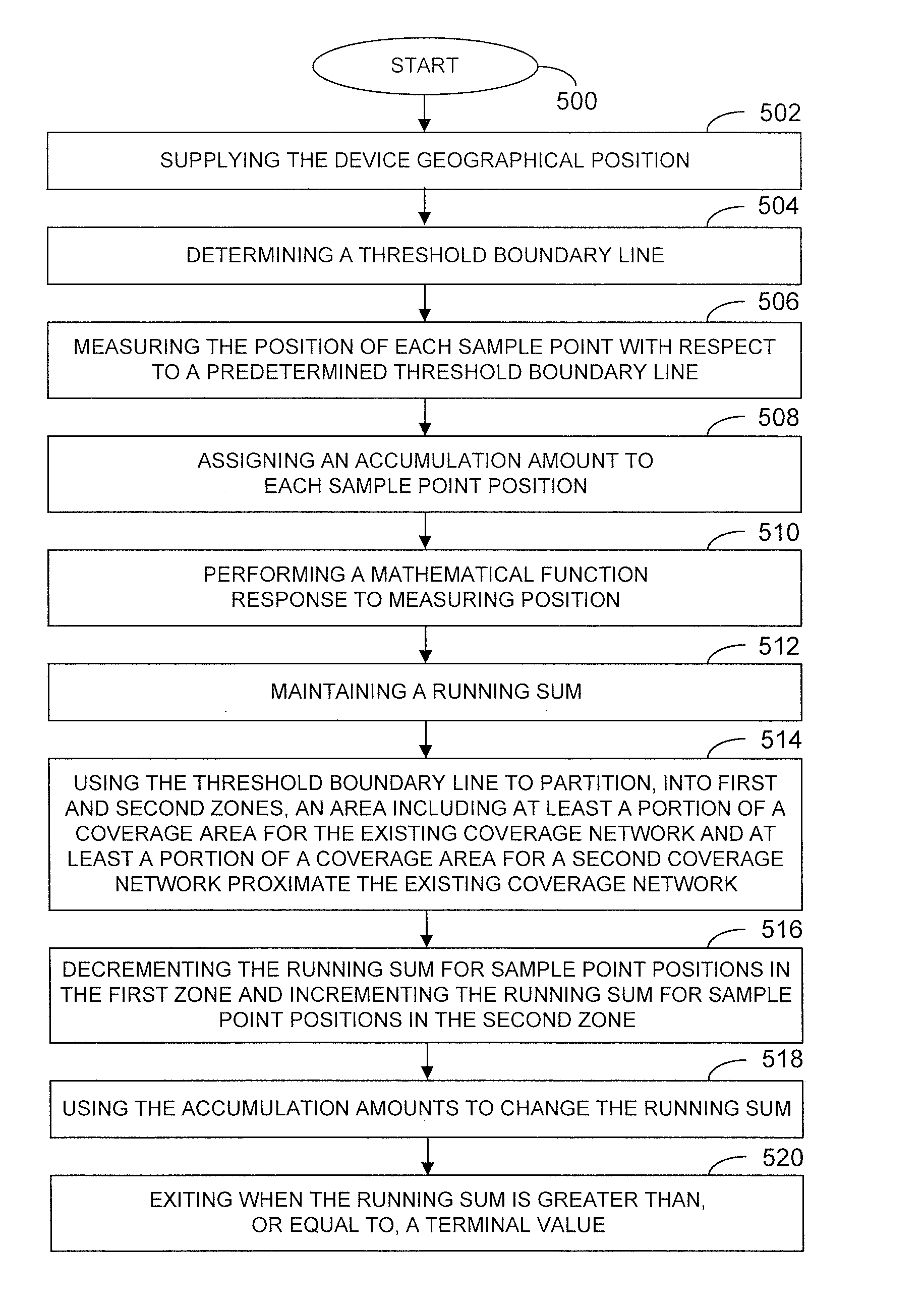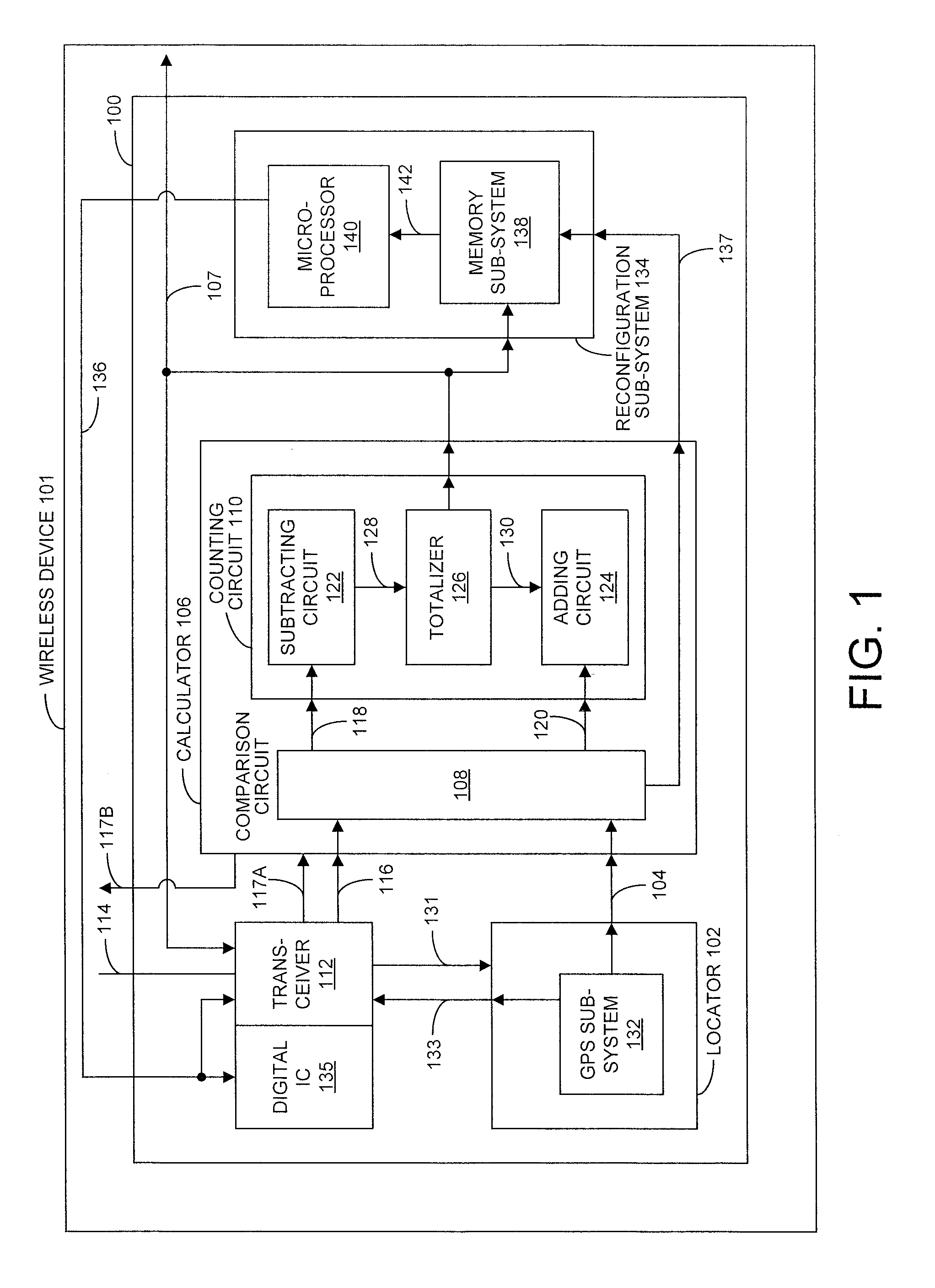System and method for using geographical location to determine when to exit an existing wireless communications coverage network
a wireless communication and coverage network technology, applied in the field of systems, can solve problems such as unnecessary loss, attendant degradation of battery performance, missing pages or dropping calls on origination,
- Summary
- Abstract
- Description
- Claims
- Application Information
AI Technical Summary
Benefits of technology
Problems solved by technology
Method used
Image
Examples
Embodiment Construction
[0021]FIG. 1 is a schematic block diagram depicting a system 100 for determining when to exit an existing wireless communications coverage network. The system 100 in wireless device 101 includes a locator 102 with an output on line 104 to supply device geographical sample positions and a calculator 106 with an input connected to line 104. The calculator 106 can be implemented in software or hardware. In some aspects, the locator 102 output on line 104 supplies device geographical sample positions periodically. The calculator 106 has an output on line 107 to supply an exit control signal responsive to a history of device geographical sample positions and a first threshold boundary line.
[0022]The calculator 106 includes a comparison circuit 108 and a counting circuit 110. The comparison circuit 108 includes an input connected to the calculator 106 input on line 104. The comparison circuit 108 selects the threshold boundary line and measures the difference between each device geographi...
PUM
 Login to View More
Login to View More Abstract
Description
Claims
Application Information
 Login to View More
Login to View More - R&D
- Intellectual Property
- Life Sciences
- Materials
- Tech Scout
- Unparalleled Data Quality
- Higher Quality Content
- 60% Fewer Hallucinations
Browse by: Latest US Patents, China's latest patents, Technical Efficacy Thesaurus, Application Domain, Technology Topic, Popular Technical Reports.
© 2025 PatSnap. All rights reserved.Legal|Privacy policy|Modern Slavery Act Transparency Statement|Sitemap|About US| Contact US: help@patsnap.com



